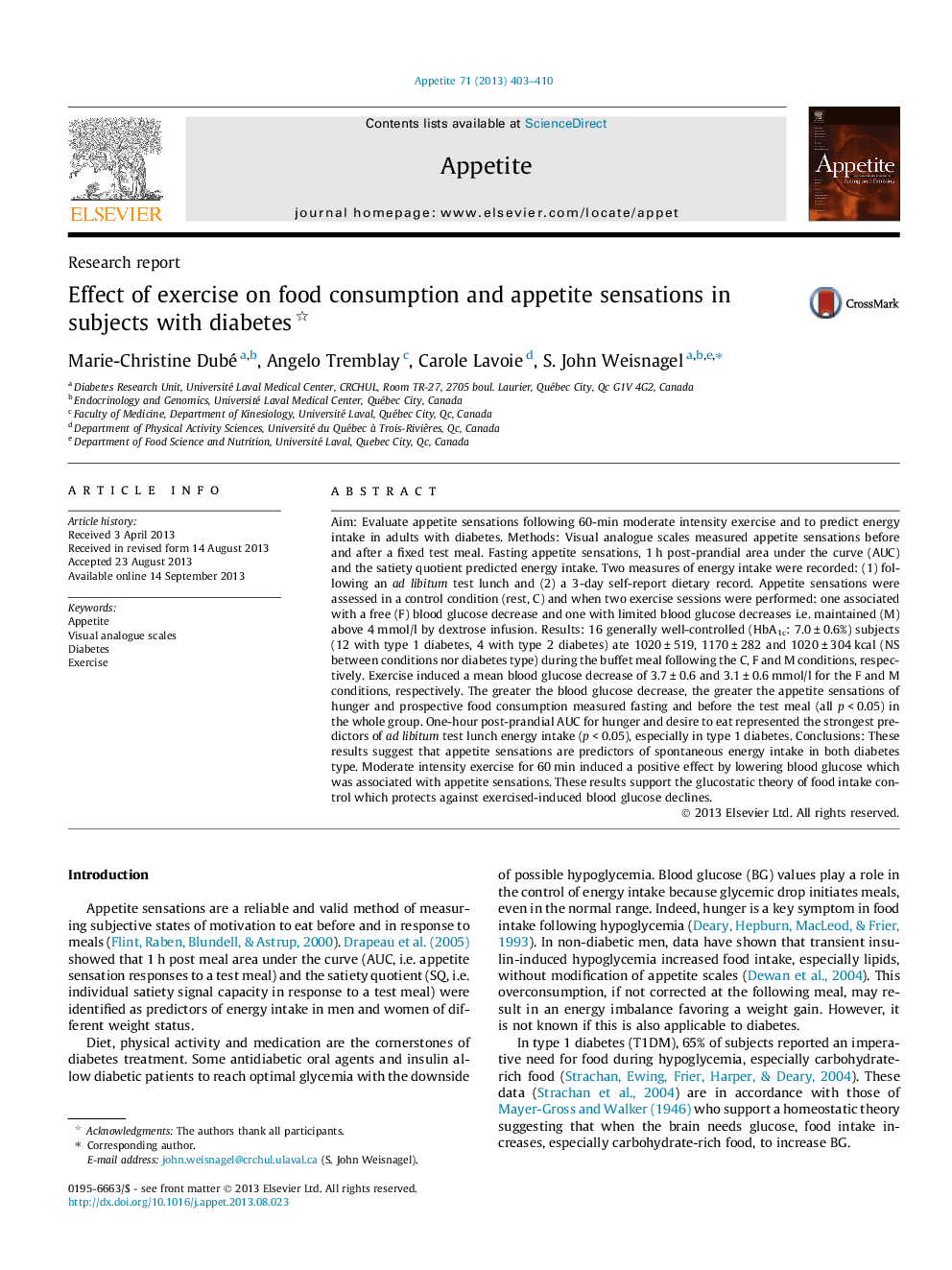| Article ID | Journal | Published Year | Pages | File Type |
|---|---|---|---|---|
| 7311038 | Appetite | 2013 | 8 Pages |
Abstract
Aim: Evaluate appetite sensations following 60-min moderate intensity exercise and to predict energy intake in adults with diabetes. Methods: Visual analogue scales measured appetite sensations before and after a fixed test meal. Fasting appetite sensations, 1 h post-prandial area under the curve (AUC) and the satiety quotient predicted energy intake. Two measures of energy intake were recorded: (1) following an ad libitum test lunch and (2) a 3-day self-report dietary record. Appetite sensations were assessed in a control condition (rest, C) and when two exercise sessions were performed: one associated with a free (F) blood glucose decrease and one with limited blood glucose decreases i.e. maintained (M) above 4 mmol/l by dextrose infusion. Results: 16 generally well-controlled (HbA1c: 7.0 ± 0.6%) subjects (12 with type 1 diabetes, 4 with type 2 diabetes) ate 1020 ± 519, 1170 ± 282 and 1020 ± 304 kcal (NS between conditions nor diabetes type) during the buffet meal following the C, F and M conditions, respectively. Exercise induced a mean blood glucose decrease of 3.7 ± 0.6 and 3.1 ± 0.6 mmol/l for the F and M conditions, respectively. The greater the blood glucose decrease, the greater the appetite sensations of hunger and prospective food consumption measured fasting and before the test meal (all p < 0.05) in the whole group. One-hour post-prandial AUC for hunger and desire to eat represented the strongest predictors of ad libitum test lunch energy intake (p < 0.05), especially in type 1 diabetes. Conclusions: These results suggest that appetite sensations are predictors of spontaneous energy intake in both diabetes type. Moderate intensity exercise for 60 min induced a positive effect by lowering blood glucose which was associated with appetite sensations. These results support the glucostatic theory of food intake control which protects against exercised-induced blood glucose declines.
Related Topics
Life Sciences
Agricultural and Biological Sciences
Food Science
Authors
Marie-Christine Dubé, Angelo Tremblay, Carole Lavoie, S. John Weisnagel,
